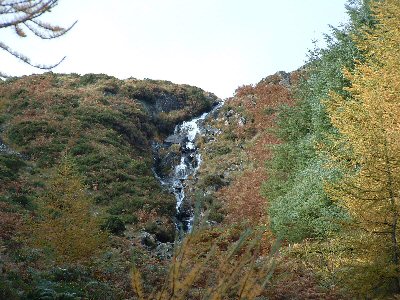The highest point in the Fews is in the district of Armaghbrague [false Armagh] in the townland of Carrigatuke [hawk’s rock]. It rises to 1024 feet and was of note even in pagan days …
… the district figures in the Red Branch Cycle of tales and is the probable location of the ‘White Carn of Guard’. Nothing now remains of the ancient cairn. Immediately south of it in the adjoining townland of Tullyvallen is the Fairy White Hill [Shee Fina] whose summit, tradition has it, was the abode of King Lir [he of the legendary two-sets-of-twins children]. [Story to follow shortly!]. Here is the source of the Whitewater.
My friend and former colleague Francis X McCorry of Lurgan is currently researching for the purpose of publishing a book on the great road north through east Ireland. Since lower-lying regions were either thickly-wooded or marshy, it is known that most routeways chose the ridges and it is likely this route came through Armaghbrague. Cuchullain would have traversed it on his way between Dun Dealgan and Emain Macha and either near or on it was the spot where he captured the live stags and whereon was the magic lake from which arose his famous chariot-horses, the Grey of Macha and the Black Steed of the Glen. When he went a-wooing Emer he travelled by the same route and it is certain he crossed its slopes many times before he finally fell in that great final combat in Louth.
Other famous figures of the Red branch Saga might have been connected with the neighbourhood but it was a figure of later date [300-400 years later] who eventually loaned a name to the district. Local tradition credits St Patrick for building his first church here with the stones from the cairn on Carrickatuke and tells of a ghostly bull that pushed over each night all that Patrick had erected by day so that in the end he deserted the spot and built in Ard Macha instead. Some old locals still mourn that ‘the oul bull bate him away’.
It is believed that the White Cairn of Guard was in fair preservation in the early fifth century. Why ‘white’ is not certain but it may have been composed of quartz stones like the great cairn of Carnavanaghan some miles to the north-east which is linked in local legend with the vanished cairn of Carrigatuke and the cairn on Mullyash a few miles to the south-west. There is a tale of the devil doing penance in the district, equipped with four huge creels of stones ‘suspended from some sort of yoke attached to his shoulders’. The burden was heavy and His Satanic Majesty grew weary, eventually spilling a creel on each of the three hills but, quote, ‘getting safe till hell with the other’.
Human habitation was possibly established here in Bronze Age times but in Celtic [Iron Age] times it formed a link in the southern defences of Ulster’s famous ancient capital. Tales of early Christian times of the church-destroying activities of the bull may disguise the operations of a band of people hostile to the new faith. Yet the same tales indicate some success for Patrick for followers were to the fore in the hunt that ended in the slaughter of the bull and his burial on Corran nearby. Conversely there are accounts elsewhere in the County not of these followers but of a resurrected Ossian – brought back by Patrick so that he might learn of the past deeds of that famous warrior and his companions – killing the bull. Again this might represent rebellion by some against the new faith in favour of more ancient pagan beliefs.
